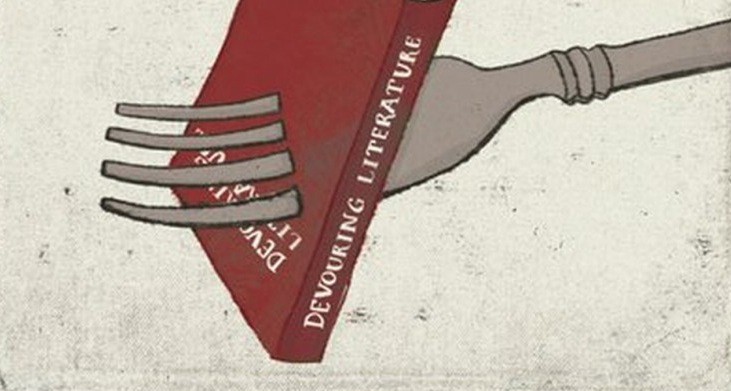essays
CHICAGO DISPATCH: Seven Innovative Chicago Magazines
C

Chicago’s literary scene dates back a bit. You might start with Upton Sinclair and his most famous work, The Jungle, which revealed the horror of the Chicago meat-packing industry. In it there’s a clear sense of the struggle between laborers and the owning-class. It also provides vivid description of the fetid conditions in which Americans’ meat was kept, which proved to be of far greater interest to the meat-and-book consuming public.
I’m sure in those days writers like Sinclair would give readings inside of the stockyards, between piles of animal protein. I don’t know this for a fact, though. I wasn’t there, and I’ve done very little research on the subject. But doesn’t it sound like what probably happened? I say yes, a definitive yes.
What I do know is, Chicago’s independent publishing community is as vibrant now as it has ever been, since the time of its humble, meat-surrounded origins. Take for example its many literary magazines. There is an abundance, a veritable surfeit, of said magazines being published right here, right now, right under the nose of the average person, both visitor and Chicagoan alike. Long removed from the stockyards (probably), events for these magazines are now hosted in local bars, coffee shops and independent bookstores. Publishing happens in people’s very own homes. Indie literature is as readily available and resurgent in the Windy City as microbrewed beer.
It’s my hope, in time, I’ll have a “CHICAGO DISPATCH” for the many deserving presses, reading series, publications, book sellers, coffee shops and bars there are to be found here in Chicago (plus maybe some mention of where you might go to get delicious Chicago-style pizza, which is indeed what all Chicago writers consume to become more literary, true fact). But I had to start somewhere, because otherwise this would be a very long post and you know how the internet hates those. I’ve probably written too much about the internet hating long posts and articles and so forth already. Let’s just get to the magazines, then.

Artifice Magazine — James Tadd Adcox and Rebekah Silverman brought this publication to life in 2009. Both have since departed but the magazine lives on as an imprint of Curbside Splendor Publishing and through the diligent efforts of its current Editor-in-Chief, Peter Jurmu.
James Tadd Adcox told me a little about the origins of the project. He and Silverman attended the Purdue University Creative Writing MFA together, working on the Sycamore Review there (Silverman served as Editor-in-Chief and Adcox served as its fiction editor).
Adcox joked that at one point, while working on the Sycamore Review, he decided stories that included dogs or cancer in their first pages would automatically be rejected. There was a kernal of truth to this notion: Adcox wasn’t interested in featuring realist fiction that was ubiquitous in most of the notable collegiate literary magazines. Instead, Adcox and Silverman saw an opening to publish first-rate surrealist and absurdist stories that seemed to have fewer places (at the time, at least) to be published. It was in the same spirit that Artifice was born, post-graduation from Purdue, in a restaurant in Chicago’s Wicker Park neighborhood, Penny’s Noodles (one of three restaurants Adcox recalled frequenting at the time).
Artifice, not limiting itself exclusively to an annual journal, is now also publishing books, with the collections of poets and writers like Daniela Ozlewska, Sara Woods (who previously published under the name Russ Woods) and Cassandra Troyan either currently available or forthcoming.
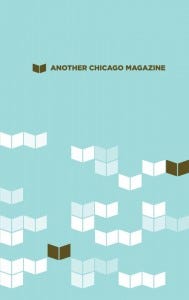
ACM: Another Chicago Magazine — Full disclosure, this past March I joined ACM’s staff as its fiction editor. And while it’s reasonable to say mentioning ACM on this list impugns my own character, I hope that you will look beyond all that to see the remarkable publication Another Chicago Magazine is. It has thrived for over 35 years as a mainstay of Chicago’s independent publishing community. And having showcased the work of folks like Charles Bukowski, a young David Sedaris, Brigit Pegeen Kelly, Steve Almond, Patrick Somerville, Samantha Irby, Amelia Gray, and on and on, ACM has undoubtedly earned its indie cred.
ACM began with Lee Webster and a collection of University of Illinois in Chicago graduates who founded it in 1977. Since then, it’s weathered plenty of changes to its staff, including Webster’s transference of power to Barry Silesky, who joined ACM in the eighties and took over entirely by the ’90s. Silesky ceded Editor-in-Chief duties to Jacob Knabb, who in turn has handed off responsibility for the magazine to Caroline Eick.
Working alongside me, as fiction editor, are more seasoned, better editors like the aforenamed Caroline Eick (managing), David Welch (poetry), Colleen O’Connor (non-fiction), Josalyn Knapic (assistant fiction), as well as a whole host of really fantastic readers and interns.
ACM is always looking to put together a magazine as diverse as the city it represents. And furthermore, there’s a concerted effort afoot to move well beyond its Chicago namesake, as Eick herself has now relocated to New York City. The hope is this, along with other changes, will expand ACM’s reach even further and bring it in contact with many new readers and contributors.

Skydeer Helpking — Sara Woods and Jeannette Gomes have collaborated on this project for just about a year now, which is especially interested in publishing female poets and / or queer poets and / or poets of color. As for their aesthetic sensibility, Sara Woods has said they’re especially interested in poetry and hybrid works that have lots of heart and engage with the surreal and dream logic.
The first issue featured poets like Sarah Jean Alexander, M. Kitchell, Matthew Maheny, Leif Haven, Simon Jacobs, Roberto Montes and many more. So many more.
And while half the tandem has relocated elsewhere (i.e., Woods is living in Portland, Oregon nowadays) the publication was founded and debuted in Chicago, and has the same taste for the unusual that is becoming increasingly embraced by other local writers and editors (as it seems to be nationwide, as well).
Also! Please note, they read all submissions blindly and only during the month of July, so get on that.
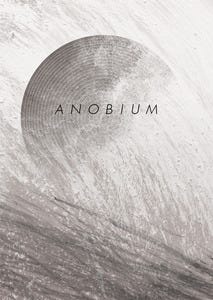
Anobium — Benjamin Van Loon likes weirdness, if I had to judge Anobium on one standalone feature. It’s much more than that, though. I don’t think I’m surprising you by stating the obvious here, but I’m stating it anyway. For instance, the publication takes its name from the Greek word for lifelessness. The publication was founded by Van Loon and “Mary J. Levine” in 2011, and it continues to be run and published in Chicago.
Anobium Vol. 1 (summer 2011) begins with a “Letter From the Editor” — Mary J. Levine — who is, in fact, not a real person (and this then seems like something a publication whose name literally translates to “lifeless” would do).
In her letter “Levine” explains, “I am an amalgamation of thought and knuckles and corporate policy.” And like so many corporate and governmental entities, she is free to take the blame, be Big Brother to the faceless many who are truly responsible. It seems a convenient setup, perhaps as ingenious as the works Anobium features. Though as always, I’ll let you be the judge.
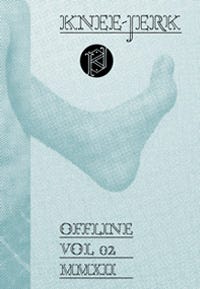
Knee-Jerk Magazine — C. James Bye (Editor-in-Chief and Publisher), Jonathan Fullmer (Creative Consultant) and Stephen Tartaglione (Director of Content Strategy) are a trio of literary luminaries who spent many years together in Chicago publishing Knee-Jerk (although there’s been a bit of a dispersal of late — Bye now lives in Tennessee, and Tartaglione now lives in Ohio). They collectively founded Knee-Jerk (in Chicago) in 2009, and this July marks the five-year anniversary of their publication.
I was first personally acquainted with Knee-Jerk at a release party for their Offline Vol. 1 issue way back in early 2011. It featured rising (and established) Chicago literary stars like Lindsay Hunter, Jacob Knabb, Kathleen Rooney and Michael Czyzniejewski, to name a few. I was also in awe of the rapport Bye, Fullmer and Tartaglione visibly had — seeming both extremely funny and at ease while team hosting this event.
They also published THIS STORY, which I think everyone should read at least once.
Knee-Jerk has grown in recent years. According to Bye they now publish — alongside staples like fiction and nonfiction — art, Reviews of Things and interviews (provided people query before doing the interview). Bye was also particularly excited about Knee-Jerk’s recent 50th posting of Greg Fiering’s “Migraine Boy” comic strip. According to Bye, “[Fiering] has been inspiring me since I was in middle school.”
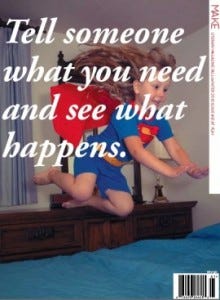
MAKE Magazine — MAKE has been around since 2004 doing all sorts of great things for literature in Chicago. It was founded by Ramsin Canon, Mike Zapata and Sarah Dodson, the latter of whom I turned to for a bit more information regarding all things MAKE.
For starters, Dodson offered a brief overview of what goes into the creation of an issue: “Each issue of MAKE follows a theme and is, more or less, equal parts fiction, poetry, nonfiction, visual art, reviews, interview, and translated work. The themes vary considerably issue to issue, allowing for a wider range of styles — from first-person narrative to visual poems.”
They’ve published a great litany of writers, many of whom are Chicago-based, though by no means is it exclusive in that way. Some examples of great stories, poems and nonfiction include work by James Tate, Adam Levin, Gina Frangello, and Alissa Nutting, among many others.
The layout of the publication is alone something to behold. Dodson said that a few years ago they upgraded MAKE’s paper stock and added color ink with the idea that “each issue is an art object, as well as a format to distribute art, and the design of each issue is as carefully considered as each poem or story.”
Their forthcoming fifteenth issue, “MISFITS,” will include pieces that didn’t quite fit with previous issues. It will also include more illustrations and what Dodson said is an “extra-rich ‘Intercambio’ section,” with works translated from Spanish to English. Among the publication’s editors are people living and working in Chicago, New York City, Los Angeles, Mexico City, and Chapel HIll, NC, contributing greatly to its cosmopolitan flare.
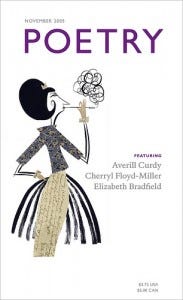
Poetry Magazine — The Poetry Foundation is literally an institution here in Chicago. It was founded in 2003 with their primary mission being: “To raise poetry to a more visible and influential position in American culture.” At the time of its founding, it was gifted a great bequest from Ruth Lilly to help fulfill that mission. They have a building! It’s located downtown.
Poetry Magazine, meanwhile, has been around much longer than the foundation, arguably a Highlander among other literary magazines that focus almost exclusively on poetry (as their name suggests). The publication was founded in 1912 by Harriet Monroe and has endured over the years as an offshoot of various publishers (for instance, preceding the Poetry Foundation was the Modern Poetry Association).
Fred Sasaki, Art Director for the magazine, was kind enough to answer a few of my questions about his personal experiences with Poetry and poetry in general, saying:
“Our work is more love than commitment, which I can best describe as kismet. I’ve been with the magazine 12 years and things still feel fresh. So much has changed while I’ve been with Poetry — since before the Lilly bequest, the Poetry Foundation, the building — and yet the job has in fact been everything I expected. Like a page from a fairy tale. But that’s because I found my rabbit hole. And I’d like to say the future of poetry is always brave and new.”
Polly Faust, Media Assistant for the Poetry Foundation, offered a quick rundown of what to expect from the magazine in the very near future: “Our next issue of the magazine, July/August, features works by Tony Fitzpatrick, whose final Chicago exhibition, Secret Birds will be in the Poetry Foundation Gallery Space from July 1- September 12.”





